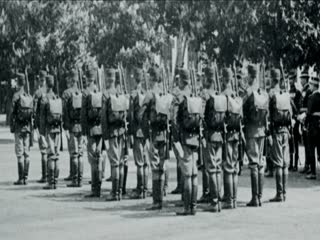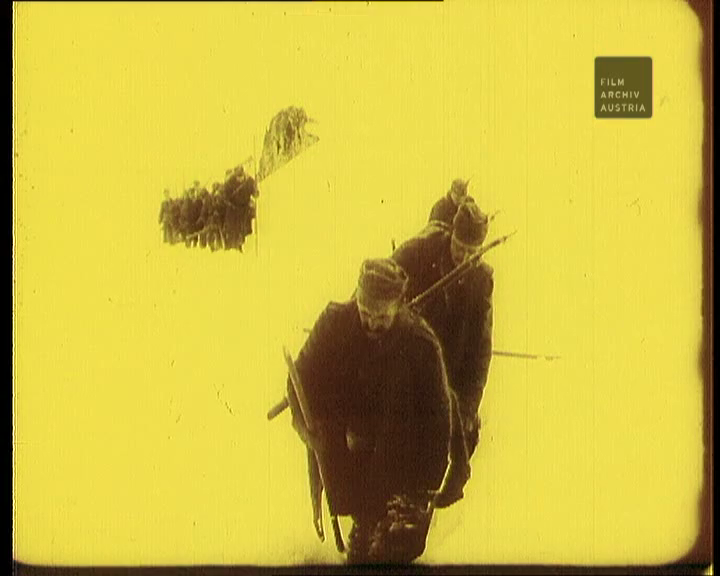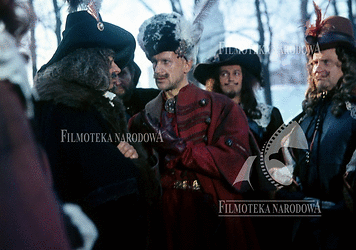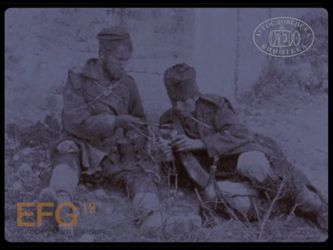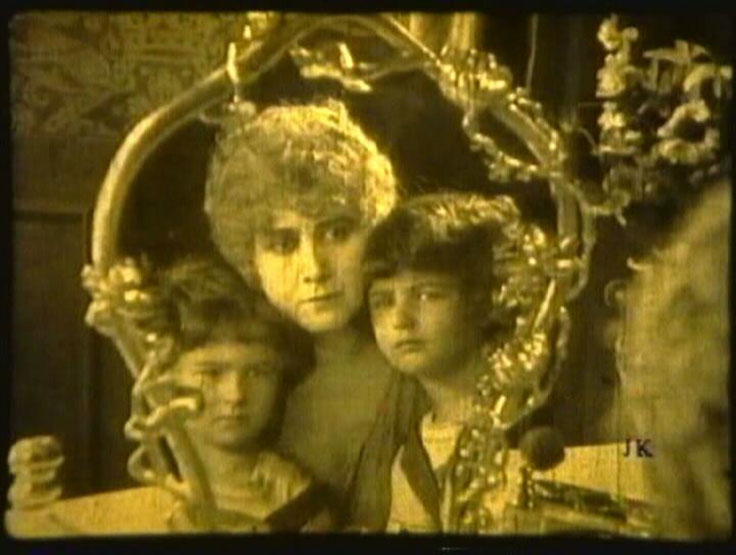Sammlungen
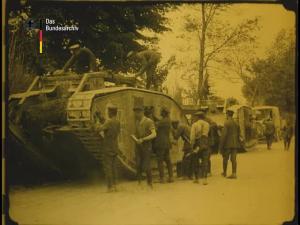 >>View collection From its holdings related to the First World War the Federal Archives / Bundesarchiv-Filmarchiv Berlin makes available twenty hours of film material.
>>View collection From its holdings related to the First World War the Federal Archives / Bundesarchiv-Filmarchiv Berlin makes available twenty hours of film material.
Amongst them different genres such as newsreels – „Messter-Woche“, partly tinted, short documentaries – „Bilder aus der großen Schlacht“ (Pictures of the great Battle in the West), part one to six.
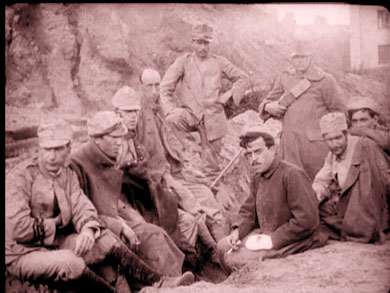 >>View collection The CNC French Film Archives gives access to over 100 films related to the First World War. These include films produced both during the war – although authorities were quick to exploit the film industry – and in the post-war period.
>>View collection The CNC French Film Archives gives access to over 100 films related to the First World War. These include films produced both during the war – although authorities were quick to exploit the film industry – and in the post-war period.
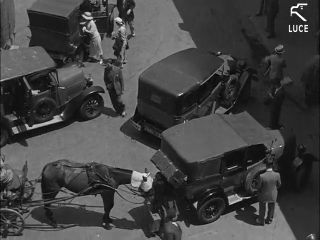 >> Sammlung ansehen Die Sammlung beinhaltet 3.000 Dokumentar- und Spielfilme von der Stummfilmzeit bis heute. Ob schwarz-weiss oder in Farbe, kurz oder lang, von unterschiedlichsten Regisseuren behandeln sie verschiedenste Themen aus Geschichte und Kultur. In der Sammlung befinden sich auch frühe Werke von Rossellini, Antonioni, Comencini, De Seta und anderen berühmten italienischen Filmemachern.
>> Sammlung ansehen Die Sammlung beinhaltet 3.000 Dokumentar- und Spielfilme von der Stummfilmzeit bis heute. Ob schwarz-weiss oder in Farbe, kurz oder lang, von unterschiedlichsten Regisseuren behandeln sie verschiedenste Themen aus Geschichte und Kultur. In der Sammlung befinden sich auch frühe Werke von Rossellini, Antonioni, Comencini, De Seta und anderen berühmten italienischen Filmemachern.
 >> Sammlung ansehen Rund 350.000 Fotos aus verschiedenen Sammlungen von LUCE wurden aus über 3.000.000 Fotos des Historischen Archivs der Institution ausgewählt. Die in EFG verfügbaren Fotos stammen aus der Zeit des Faschismus bis zum Ende der 1970er Jahre. Sie zeigen film-bezogene Ereignisse und das italienische "dolce vita" mit all seinen berühmten Persönlichkeiten und Ereignissen.
>> Sammlung ansehen Rund 350.000 Fotos aus verschiedenen Sammlungen von LUCE wurden aus über 3.000.000 Fotos des Historischen Archivs der Institution ausgewählt. Die in EFG verfügbaren Fotos stammen aus der Zeit des Faschismus bis zum Ende der 1970er Jahre. Sie zeigen film-bezogene Ereignisse und das italienische "dolce vita" mit all seinen berühmten Persönlichkeiten und Ereignissen.
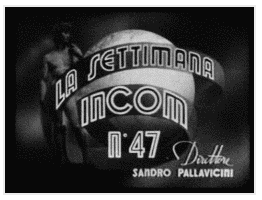 >> Sammlung ansehen Rund 14.000 Beiträge aus einer der berühmtesten italienischen Wochenschauen sind in EFG verfügbar. Sie zeigen kulturelle, soziale und politische Ereignisse in Italien von 1946 bis 1965 und dokumentieren somit die Entwicklung des Landes in dieser Zeit.
>> Sammlung ansehen Rund 14.000 Beiträge aus einer der berühmtesten italienischen Wochenschauen sind in EFG verfügbar. Sie zeigen kulturelle, soziale und politische Ereignisse in Italien von 1946 bis 1965 und dokumentieren somit die Entwicklung des Landes in dieser Zeit.
In this collection, one can find a cinematographic cartography of Portugal and the political events, from the monarchy to the republican revolution; the arrival of the aviation pioneers after the first aerial crossing of the South Atlantic and a football match or a car race; a visit to the zoo and the funerals of a great Poet. But also some aspects of life overseas: the industry and agriculture in São Tomé, the Dala Falls in Angola, or a trip to Mozambique. Along with the moving images, one can also find the works on paper on this same subject: a photo of the directors, an interview, a poster of the film, a review published in a film magazine, letters from a producer to the distribution companies or a set of intertitles.
 >> Sammlung ansehen Der Wissenschaftler Étienne-Jules Marey (1830 - 1904) verwendet fotografische Methoden, um sein ganzes Leben lang die Bewegung von Mensch und Tier studieren. La Cinémathèque bietet Zugang zu rund 400 Fotos aus dem Nachlass von Étienne-Jules Marey über EFG.
>> Sammlung ansehen Der Wissenschaftler Étienne-Jules Marey (1830 - 1904) verwendet fotografische Methoden, um sein ganzes Leben lang die Bewegung von Mensch und Tier studieren. La Cinémathèque bietet Zugang zu rund 400 Fotos aus dem Nachlass von Étienne-Jules Marey über EFG.
 >> Sammlung ansehen The Triangle Film Corporation existierte von 1915 bis 1918. Sie war eine der größten amerikanischen Produktionsfirmen ihrer Zeit und beschäftigte Regisseure wie D.W. Griffiths, Thomas Ince und Mack Sennett. Mit Hilfe der rund 1.400 Fotos aus der John E. Allen - Triangle Collection, kann die Geschichte des Unternehmens auf EFG nachvollzogen werden.
>> Sammlung ansehen The Triangle Film Corporation existierte von 1915 bis 1918. Sie war eine der größten amerikanischen Produktionsfirmen ihrer Zeit und beschäftigte Regisseure wie D.W. Griffiths, Thomas Ince und Mack Sennett. Mit Hilfe der rund 1.400 Fotos aus der John E. Allen - Triangle Collection, kann die Geschichte des Unternehmens auf EFG nachvollzogen werden.
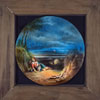 >> Sammlung ansehen Die Laterna Magica-Sammlung der Cinémathèque française enthält einige der schönsten und am besten erhaltenen Laterna Magica-Bilder aus der Vorzeit des Kinos. Eine Auswahl von rund 1.500 dieser handbemalten und fotografisch einzigartigen Kunstwerke aus Frankreich, Großbritannien, Deutschland und den USA aus dem 18. Jahrhundert bis in die 1920er Jahre ist über das EFG verfügbar.
>> Sammlung ansehen Die Laterna Magica-Sammlung der Cinémathèque française enthält einige der schönsten und am besten erhaltenen Laterna Magica-Bilder aus der Vorzeit des Kinos. Eine Auswahl von rund 1.500 dieser handbemalten und fotografisch einzigartigen Kunstwerke aus Frankreich, Großbritannien, Deutschland und den USA aus dem 18. Jahrhundert bis in die 1920er Jahre ist über das EFG verfügbar.
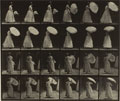 >> Sammlung ansehen Mit der Serialisierung von Fotos war Eadward Muybridge einer der ersten, die den Eindruck von bewegten Bildern erschufen. EFG bietet Zugriff auf über 700 Bilder aus dem Nachlass von Muybridge.
>> Sammlung ansehen Mit der Serialisierung von Fotos war Eadward Muybridge einer der ersten, die den Eindruck von bewegten Bildern erschufen. EFG bietet Zugriff auf über 700 Bilder aus dem Nachlass von Muybridge.
 >> Sammlung ansehen La Cinémathèque française ist im Besitz einer kostbaren Büchersammlung, die die Entwicklungen der Vorgeschichte des Kinos und fotografischer und filmischer Techniken nachzeichnet. Die rund 280 Bücher dieser Sammlung stammen aus dem 17. Jahrhundert und können auf dem EFG gefunden werden.
>> Sammlung ansehen La Cinémathèque française ist im Besitz einer kostbaren Büchersammlung, die die Entwicklungen der Vorgeschichte des Kinos und fotografischer und filmischer Techniken nachzeichnet. Die rund 280 Bücher dieser Sammlung stammen aus dem 17. Jahrhundert und können auf dem EFG gefunden werden.
 >>View collection The CINEMATEK World War One collection contains a large variety of newsreels, documentary and feature films, mostly produced in the decade after the war. The images include representations of Belgium ("Poor Little Belgium") as a victim of the 'Great War', the fate and suffering of women during the war or the Flemish emancipation and how films mainly produced by Clemens De Landtsheer contributed to the myth of the Flemish soldier on the Yser.
>>View collection The CINEMATEK World War One collection contains a large variety of newsreels, documentary and feature films, mostly produced in the decade after the war. The images include representations of Belgium ("Poor Little Belgium") as a victim of the 'Great War', the fate and suffering of women during the war or the Flemish emancipation and how films mainly produced by Clemens De Landtsheer contributed to the myth of the Flemish soldier on the Yser.
 Von den 1960er bis 1990er Jahren produzierte die italienische Firma Corona Cinematografica Dokumentarfilme, Animationsfilme und Wochenschauen. Für viele große aber auch weniger bekannte Regisseure war die Corona Cinematografica eine Art Schule, in denen sie das Handwerk des Filmemachens erlernen oder festigen konnten. Rund 150 Filme aus der Corona-Sammlung sind auf auf dem EFG. Darüber hinaus macht die Cineteca di Bologa eine Reihe von restaurierten frühen Stummfilmen, Spielfilme aus verschiedenen Genres sowie Dokumentarfilme verfügbar.
Von den 1960er bis 1990er Jahren produzierte die italienische Firma Corona Cinematografica Dokumentarfilme, Animationsfilme und Wochenschauen. Für viele große aber auch weniger bekannte Regisseure war die Corona Cinematografica eine Art Schule, in denen sie das Handwerk des Filmemachens erlernen oder festigen konnten. Rund 150 Filme aus der Corona-Sammlung sind auf auf dem EFG. Darüber hinaus macht die Cineteca di Bologa eine Reihe von restaurierten frühen Stummfilmen, Spielfilme aus verschiedenen Genres sowie Dokumentarfilme verfügbar.
Diese Sammlung wird erst im August auf dem EFG verfügbar sein.
>> View collection Cineteca di Bologna provides access to a series of silent films restored by them.
 >> View collection This collection contains around 6.500 digitised film-censorship related documents from Austria, Czechoslovakia and Germany in the 1920s and 1930s. The documents had been assembled from various film and state archives by Deutsches Filminstitut – DIF, Filmarchiv Austria and Národní filmový archiv in the framework of the EU-funded project "COLLATE: Collaboratory for Annotation, Indexing and Retrieval of Digitized Historical Archive Material".
>> View collection This collection contains around 6.500 digitised film-censorship related documents from Austria, Czechoslovakia and Germany in the 1920s and 1930s. The documents had been assembled from various film and state archives by Deutsches Filminstitut – DIF, Filmarchiv Austria and Národní filmový archiv in the framework of the EU-funded project "COLLATE: Collaboratory for Annotation, Indexing and Retrieval of Digitized Historical Archive Material".
.jpg) >> View collection The complete collection of Danish Silent Film Programmes from the Danish Film Institute is a unique resource both to surviving films, but also to the narrative content of films that no longer exist. This collection gives an insight to scholars, enabling a broader insight into the types of films that were made and distributed, even if the films themselves did not survive. As marketing material it is also an invaluable resource for academic research in fan and film culture. Read more about the Danish contribution to EFG on DFI's website.
>> View collection The complete collection of Danish Silent Film Programmes from the Danish Film Institute is a unique resource both to surviving films, but also to the narrative content of films that no longer exist. This collection gives an insight to scholars, enabling a broader insight into the types of films that were made and distributed, even if the films themselves did not survive. As marketing material it is also an invaluable resource for academic research in fan and film culture. Read more about the Danish contribution to EFG on DFI's website.
 >> Sammlung ansehen EFG zeigt über 45.000 Filmstills, die mehr als einem Jahrhundert dänischer Filmproduktion illustrieren. Die umfangreiche Sammlung gibt einen Einblick in visuelle Qualität und Stil des dänischen Kinos, von den frühen Stummfilmen mit Asta Nielsen bis zu die jüngsten Werke von international renommierten Regisseuren wie Susanne Bier und Lars von Trier.
>> Sammlung ansehen EFG zeigt über 45.000 Filmstills, die mehr als einem Jahrhundert dänischer Filmproduktion illustrieren. Die umfangreiche Sammlung gibt einen Einblick in visuelle Qualität und Stil des dänischen Kinos, von den frühen Stummfilmen mit Asta Nielsen bis zu die jüngsten Werke von international renommierten Regisseuren wie Susanne Bier und Lars von Trier.
 >> Sammlung ansehen Die 77 Filme des dänischen Filmpioniers Peter Elfelt (1866-1931) sind nicht nur aus filmischer Sicht interessant, sondern sie sind zugleich auch einzigartige Zeitdokumente. Als königlicher Hoffotograf hatte Elfelt Zugang zu den wichtigsten Personen und Ereignissen seiner Zeit, der dänischen High-Society, die in seinen Filmen zu sehen sind.
>> Sammlung ansehen Die 77 Filme des dänischen Filmpioniers Peter Elfelt (1866-1931) sind nicht nur aus filmischer Sicht interessant, sondern sie sind zugleich auch einzigartige Zeitdokumente. Als königlicher Hoffotograf hatte Elfelt Zugang zu den wichtigsten Personen und Ereignissen seiner Zeit, der dänischen High-Society, die in seinen Filmen zu sehen sind.
_mp2.jpg) >> View collection The Danish Film Institute gives access to documentary footage and films as well as fiction films from the period 1914-1918. The documentary collection contains both general "news" items from the period, with events and actuality items, but also some of the earliest footage from the German captured territories in Northern France and Prussia.
>> View collection The Danish Film Institute gives access to documentary footage and films as well as fiction films from the period 1914-1918. The documentary collection contains both general "news" items from the period, with events and actuality items, but also some of the earliest footage from the German captured territories in Northern France and Prussia.
 >> Sammlungen ansehen Der Beitrag des Dänischen Filminstituts auf EFG enthält eine Reihe von frühen Dokumentarfilmen, die das Leben und das Aussehen der dänischen Gesellschaft in der Zeit von 1906 bis 1940 zeigen. Unter den 300 Filmen sind Darstellungen von modernen Produktionsanlagen und dem Handel, sowie propagandistische Filme und Nachrichten. Eine Sammlung von über 50 fiktionalen frühen Kurzfilmen geben einen Eindruck davon, was Zuschauer damals zur Unterhaltung ansahen. Darüber hinaus können rund 700 Ausschnitte und Trailer von Filmen aus dem pädagogischen Verleihprogramm des Dänischen Filminstituts. Letztere Sammlung enthält aktuelle Filme, die vor allem wegen ihre Relevanz für den Bildungsbereich und aufgrund ihres Informationsgehalts ausgewählt wurden.
>> Sammlungen ansehen Der Beitrag des Dänischen Filminstituts auf EFG enthält eine Reihe von frühen Dokumentarfilmen, die das Leben und das Aussehen der dänischen Gesellschaft in der Zeit von 1906 bis 1940 zeigen. Unter den 300 Filmen sind Darstellungen von modernen Produktionsanlagen und dem Handel, sowie propagandistische Filme und Nachrichten. Eine Sammlung von über 50 fiktionalen frühen Kurzfilmen geben einen Eindruck davon, was Zuschauer damals zur Unterhaltung ansahen. Darüber hinaus können rund 700 Ausschnitte und Trailer von Filmen aus dem pädagogischen Verleihprogramm des Dänischen Filminstituts. Letztere Sammlung enthält aktuelle Filme, die vor allem wegen ihre Relevanz für den Bildungsbereich und aufgrund ihres Informationsgehalts ausgewählt wurden.
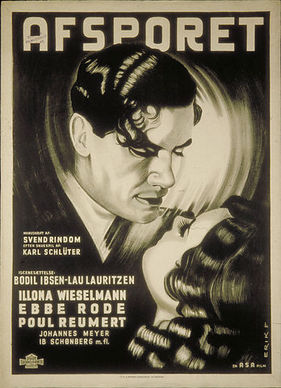 >> View collection The Danish Film Institute's Poster Collection includes posters from the earliest surviving, Morfinisten from 1912, to the posters of current films. The collection is both a scholarly resource showing the development of poster art, but also a visual pleasure to browse, as these artifacts were meant to create instant attraction to the film. The posters are often works of art in themselves. Read more about the Danish Film Institute's contribution to EFG on DFI's website.
>> View collection The Danish Film Institute's Poster Collection includes posters from the earliest surviving, Morfinisten from 1912, to the posters of current films. The collection is both a scholarly resource showing the development of poster art, but also a visual pleasure to browse, as these artifacts were meant to create instant attraction to the film. The posters are often works of art in themselves. Read more about the Danish Film Institute's contribution to EFG on DFI's website.
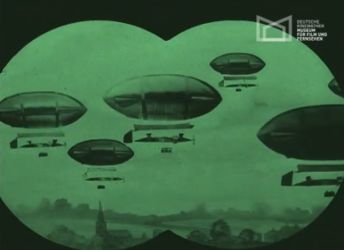
>>View collection The World War One collection from the archives of the Deutsche Kinemathek contains over thirty films as well as other film-related material such as film related documents, posters and film stills.
 >> Sammlung ansehen Der Korpus an Filmen zum Ersten Weltkrieg, die das Deutsche Filminstitut im Rahmen von EFG1914 digitalisiert, setzt sich zum überwiegenden Teil aus nicht-fiktionalem Material wie Wochenschauen, Dokumentar- und Propagandafilmen sowie Amateuraufnahmen zusammen. Fiktionale Filme bilden einen kleineren Teil des Materials; neben Spielfilmen zählen dazu auch einige Tonbilder – Kurzfilme, die im Kino von einer Schallplatte synchron begleitet wurden.
>> Sammlung ansehen Der Korpus an Filmen zum Ersten Weltkrieg, die das Deutsche Filminstitut im Rahmen von EFG1914 digitalisiert, setzt sich zum überwiegenden Teil aus nicht-fiktionalem Material wie Wochenschauen, Dokumentar- und Propagandafilmen sowie Amateuraufnahmen zusammen. Fiktionale Filme bilden einen kleineren Teil des Materials; neben Spielfilmen zählen dazu auch einige Tonbilder – Kurzfilme, die im Kino von einer Schallplatte synchron begleitet wurden.
 >> Sammlung ansehen 1946 gegründet von Filmproduzent Artur Brauner (* 1918), wurde die Central Cinema Company (CCC), eine der größten und wichtigsten Filmproduktionfirmen der deutschen Nachkriegszeit. Die für EFG ausgewählten ca. 1.150 digitalisierten Dokumente aus dem CCC-Archiv umfassen Exposés, Drehbuchausschnitte, Dialog-Listen, Korrespondenz und eine Vielzahl von Produktions-Dokumenten und -Berichten, sowie Werbematerial. Darüber hinaus lassen sich rund 1.900 Stand- und Setfotos zu CCC-Produktionen einsehen. Die ausgewählten Dokumente bieten einzigartige Einblicke in die CCC Firmenstruktur und in mehr als 40 Jahre Arbeitsalltag einer deutschen Filmproduktionsfirma.
>> Sammlung ansehen 1946 gegründet von Filmproduzent Artur Brauner (* 1918), wurde die Central Cinema Company (CCC), eine der größten und wichtigsten Filmproduktionfirmen der deutschen Nachkriegszeit. Die für EFG ausgewählten ca. 1.150 digitalisierten Dokumente aus dem CCC-Archiv umfassen Exposés, Drehbuchausschnitte, Dialog-Listen, Korrespondenz und eine Vielzahl von Produktions-Dokumenten und -Berichten, sowie Werbematerial. Darüber hinaus lassen sich rund 1.900 Stand- und Setfotos zu CCC-Produktionen einsehen. Die ausgewählten Dokumente bieten einzigartige Einblicke in die CCC Firmenstruktur und in mehr als 40 Jahre Arbeitsalltag einer deutschen Filmproduktionsfirma.
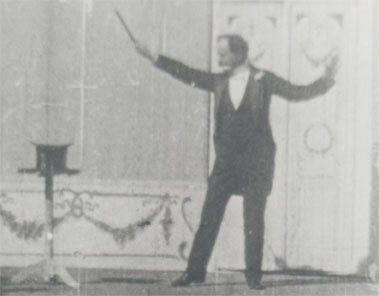 >> View collection Julius Neubronner (1852-1932), a chemist and inventor from Kronberg was one of the first people to film in the Rhine-Main region in Germany. He purchased his first camera in 1903, a "Kino" manufactured by Dresdner Foto-Firma. With his camera Neubronner recorded historical events as well as the everyday life of his family. Furthermore, he also shot short sketches performed by himself and his family on a stage set-up in the garden of their home.
>> View collection Julius Neubronner (1852-1932), a chemist and inventor from Kronberg was one of the first people to film in the Rhine-Main region in Germany. He purchased his first camera in 1903, a "Kino" manufactured by Dresdner Foto-Firma. With his camera Neubronner recorded historical events as well as the everyday life of his family. Furthermore, he also shot short sketches performed by himself and his family on a stage set-up in the garden of their home.
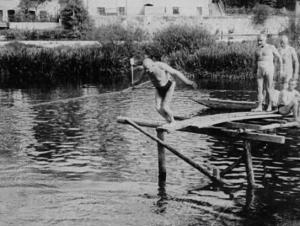 >> View collection Since the 1910s, Oskar Barnack – inventor of the "Leica" camera – has documented the activities around Wetzlar (Germany) with his self-constructed camera. He filmed floods and town fairs, medical experiments, sporting events and the company that employed him as a chief engineer: the Optical Works Ernst Leitz in Wetzlar.
>> View collection Since the 1910s, Oskar Barnack – inventor of the "Leica" camera – has documented the activities around Wetzlar (Germany) with his self-constructed camera. He filmed floods and town fairs, medical experiments, sporting events and the company that employed him as a chief engineer: the Optical Works Ernst Leitz in Wetzlar.
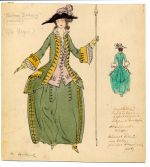 Mehr als 200 Bühnenbild- und 900 Filmkostümentwürfe, Skizzen und Notizen von namhaften deutschen (Film-) Architekten wieOtto Hunte, Walter Reimann und Hans Poelzig und Kostümbildnern wie Ali Hubert, Helga Kischkat-Reuter und Irms Pauli können über das EFG recherchiert werden. Viele der Design-Skizzen stellen Meilensteine auf ihrem Gebiet da, z. B. die Bühnenbilder für "Metropolis" (1925/26) oder "Der Golem Wie er in die Welt Kam" (1920).
Mehr als 200 Bühnenbild- und 900 Filmkostümentwürfe, Skizzen und Notizen von namhaften deutschen (Film-) Architekten wieOtto Hunte, Walter Reimann und Hans Poelzig und Kostümbildnern wie Ali Hubert, Helga Kischkat-Reuter und Irms Pauli können über das EFG recherchiert werden. Viele der Design-Skizzen stellen Meilensteine auf ihrem Gebiet da, z. B. die Bühnenbilder für "Metropolis" (1925/26) oder "Der Golem Wie er in die Welt Kam" (1920).
 View collection From 1969 to 1974, camera man and photographer Peter Gauhe worked closely with German director Rainer Werner Fassbinder. Over 4,000 digitised set photos and film stills document the shooting of such films as “Händler der vier Jahreszeiten” and “Angst essen Seele auf”.
View collection From 1969 to 1974, camera man and photographer Peter Gauhe worked closely with German director Rainer Werner Fassbinder. Over 4,000 digitised set photos and film stills document the shooting of such films as “Händler der vier Jahreszeiten” and “Angst essen Seele auf”.
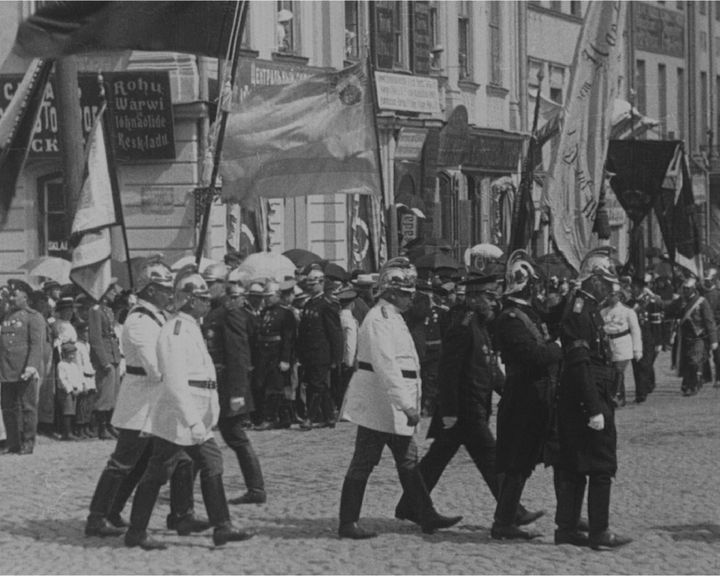 >>View collection Estonian Film Archives is giving access to 6 films and about 2,500 photos.
>>View collection Estonian Film Archives is giving access to 6 films and about 2,500 photos.
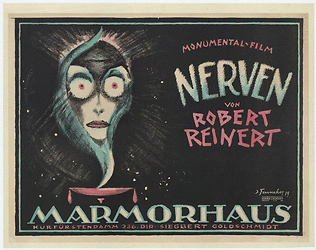 >> View collection For the EFG1914 project, EYE is contributing more than 300 film items totaling about 100 hours, and more than 900 film posters from the 1910s.
>> View collection For the EFG1914 project, EYE is contributing more than 300 film items totaling about 100 hours, and more than 900 film posters from the 1910s.
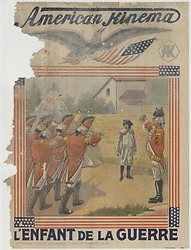 >> View collection Most of the posters EYE is contributing for EFG1914 are part of the Desmet Collection. Jean Desmet was a pioneer film distributor whose business went into bankruptcy around 1916, due to the economic effects of the WWI. Until then, Desmet tried to trade with all kinds of film companies from all over the world, and kept his papers and promotional material for the rest of his life.
>> View collection Most of the posters EYE is contributing for EFG1914 are part of the Desmet Collection. Jean Desmet was a pioneer film distributor whose business went into bankruptcy around 1916, due to the economic effects of the WWI. Until then, Desmet tried to trade with all kinds of film companies from all over the world, and kept his papers and promotional material for the rest of his life.
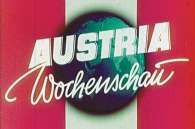 >> View collection On the European Film Gateway, the Filmarchiv Austria presents clips from the "Austria Wochenschau" (1949 – 1994), a newsreel collection which forms today a substantial starting point for Austria’s documented audiovisual contemporary history.
>> View collection On the European Film Gateway, the Filmarchiv Austria presents clips from the "Austria Wochenschau" (1949 – 1994), a newsreel collection which forms today a substantial starting point for Austria’s documented audiovisual contemporary history.
Detailed description provided by the archive:
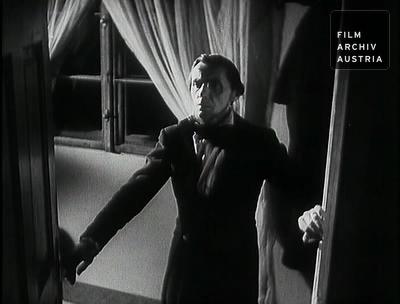
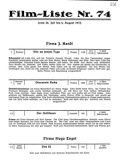 >> View collection „Paimann’s Filmlisten”, literal „Paimann's Film Lists“, was an Austrian film review journal founded by Franz Paimann. The periodical listed all new films released in Austria between 1916 and 1965. That includes all feature films which were distributed in Austria, including foreign production and non-fictional motion pictures. Each entry contains a synopsis, credit details and a rating. The first issue of „Paimann's Film Lists“ appeared 1916, at that time mere newsletters designated for Austrian cinema owners only. Starting from 1921 until 1965 „Paimann's Film Lists“ became a weekly journal. From February 1943 until January 1946 the periodical was not authorized for publication.
>> View collection „Paimann’s Filmlisten”, literal „Paimann's Film Lists“, was an Austrian film review journal founded by Franz Paimann. The periodical listed all new films released in Austria between 1916 and 1965. That includes all feature films which were distributed in Austria, including foreign production and non-fictional motion pictures. Each entry contains a synopsis, credit details and a rating. The first issue of „Paimann's Film Lists“ appeared 1916, at that time mere newsletters designated for Austrian cinema owners only. Starting from 1921 until 1965 „Paimann's Film Lists“ became a weekly journal. From February 1943 until January 1946 the periodical was not authorized for publication.
 >> View collection Between 1906 and 1910, Saturn, a Vienna-based company, produced a number of erotic films, which were the first fiction films produced in a continuous manner in the Habsburg Empire. Saturn produced films with erotic content only – and that was how it advertised itself in different trade publications, publicizing its films in a printed catalogue, very similar to the French Pathé productions, which Saturn sometimes remade in an adult manner.
>> View collection Between 1906 and 1910, Saturn, a Vienna-based company, produced a number of erotic films, which were the first fiction films produced in a continuous manner in the Habsburg Empire. Saturn produced films with erotic content only – and that was how it advertised itself in different trade publications, publicizing its films in a printed catalogue, very similar to the French Pathé productions, which Saturn sometimes remade in an adult manner.
 >>View collection Filmoteca Española presents a selection of documentaries, newsreels and non-fiction movies showing the Spanish daily city and country life during the second decade of the 20th century. Amateur movies are also included. Newsreels include international news of WWI (The Battle of the Somme, Marshall Von MacKensen advancing on Dobrudja… and more).
>>View collection Filmoteca Española presents a selection of documentaries, newsreels and non-fiction movies showing the Spanish daily city and country life during the second decade of the 20th century. Amateur movies are also included. Newsreels include international news of WWI (The Battle of the Somme, Marshall Von MacKensen advancing on Dobrudja… and more).
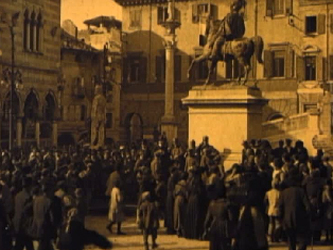 >> View collection FCI gives access to two collections: Films by Luca Comeria and treasures of Italian Silent film from the period of the First World War. The collection of films shot by Luca Comerio, a pioneer of Italian cinema, covers a period from the beginning of the 20th century until about 1920 and consists of over 30 works, including documentaries, excerpts and short comedy sketches.
>> View collection FCI gives access to two collections: Films by Luca Comeria and treasures of Italian Silent film from the period of the First World War. The collection of films shot by Luca Comerio, a pioneer of Italian cinema, covers a period from the beginning of the 20th century until about 1920 and consists of over 30 works, including documentaries, excerpts and short comedy sketches.
 >> View collection IWM has an extensive collection relating to the First World War including diaries and letters, works of art, photographs, three dimensional objects, books, pamphlets and film. The Film Archive holds around 250 hours (projected at 18fps) of First World War material. The collection illustrates all aspects of the conflict, both at home and on the fighting fronts.
>> View collection IWM has an extensive collection relating to the First World War including diaries and letters, works of art, photographs, three dimensional objects, books, pamphlets and film. The Film Archive holds around 250 hours (projected at 18fps) of First World War material. The collection illustrates all aspects of the conflict, both at home and on the fighting fronts.
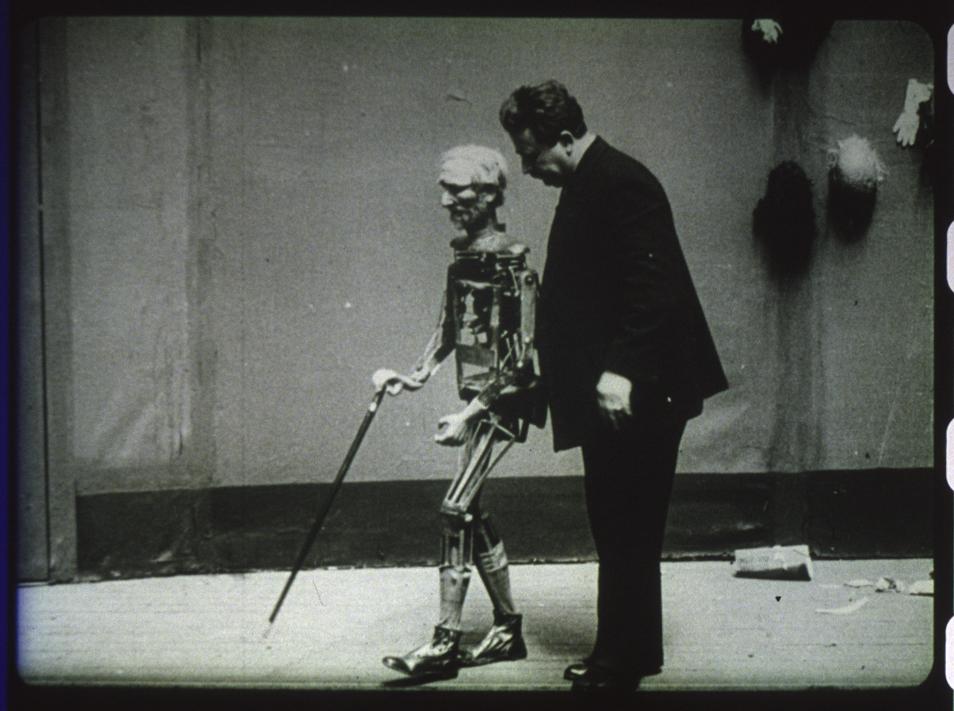 >>View collection CulturArts-IVAC contributes a feature film collection that reflects the disadvantageous impact of the war in the film production of a non-belligerent country like Spain. Three melodramas starring the great actress Margarita Xirgu and one more starring the exotic dancer Tortola Valencia show the impossibility of the Spanish film industry, then led by Barcelona-based producers, for taking advantage of those exceptional circumstances.
>>View collection CulturArts-IVAC contributes a feature film collection that reflects the disadvantageous impact of the war in the film production of a non-belligerent country like Spain. Three melodramas starring the great actress Margarita Xirgu and one more starring the exotic dancer Tortola Valencia show the impossibility of the Spanish film industry, then led by Barcelona-based producers, for taking advantage of those exceptional circumstances.
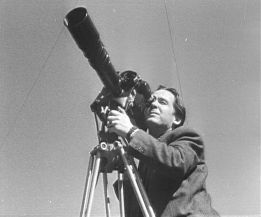 >> View collection EFG macht die vollständige Sammlung von 700 Finlandia-katsaus Wochenschauen, die zwischen 1943 und 1964 produziert wurden, abrufbar. Die Wochenschau wurde ins Leben gerufen, als die beliebten, von den Streitkräften produzierten "von der Front"-Wochenschauen begannen an Glaubwürdigkeit zu verlieren. Im Gegensatz zu den militärischen Beschreibungen der letzteren, konzentrierte sich die Finlandia-katsaus Wochenschau auf die zivilen Aspekte und Personen, sowie die Moral an der Heimatfront zu stärken. Als die entbehrungsreiche, unmittelbare Nachkriegszeit zu Ende ging, widmete sich die Wochenschau verstärkt Themen wie Freizeit und Konsum. Die Geschichte der Finlandia Wochenschauen endete 1964, als das vormalige Gesetz zur Unterstützung dokumentarischen Kurzfilme abgeschafft wurde, und das finnische Fernsehen seine Position als nationaler Nachrichtenüberbringer einnahm.
>> View collection EFG macht die vollständige Sammlung von 700 Finlandia-katsaus Wochenschauen, die zwischen 1943 und 1964 produziert wurden, abrufbar. Die Wochenschau wurde ins Leben gerufen, als die beliebten, von den Streitkräften produzierten "von der Front"-Wochenschauen begannen an Glaubwürdigkeit zu verlieren. Im Gegensatz zu den militärischen Beschreibungen der letzteren, konzentrierte sich die Finlandia-katsaus Wochenschau auf die zivilen Aspekte und Personen, sowie die Moral an der Heimatfront zu stärken. Als die entbehrungsreiche, unmittelbare Nachkriegszeit zu Ende ging, widmete sich die Wochenschau verstärkt Themen wie Freizeit und Konsum. Die Geschichte der Finlandia Wochenschauen endete 1964, als das vormalige Gesetz zur Unterstützung dokumentarischen Kurzfilme abgeschafft wurde, und das finnische Fernsehen seine Position als nationaler Nachrichtenüberbringer einnahm.
Collection coming soon! The Cineteca del Friuli holds in its collections a selection of Italian silent films that make up the "Great War Fund" and can be made available to the audience. They include numerous restorations curated by the Cineteca itself over the years, originating from nitrate copies, and various other acquisitions. The fund includes both documentary, newsreels and fictional movies and can be divided into three groups:
I. films about the war in Libya, that Italy fought between 1911 and 1912 against the Ottoman Empire and a forerunner of the First World War.
Both documentaries and fictional films want to bolster the Italian military intervention in Tripolitania and Cyrenaica and show the superiority of the Italian military.
 >> Sammlung ansehen Die Kinemathek Bern zeigt auf dem EFG zehn Filme des bekannten Fotografen und Dokumentarfilmers Kurt Blum (1922-2005). Blum folgte in seiner Arbeit einem hohen ästhetischen Anspruch und erhielt zahlreiche internationale Auszeichnungen.
>> Sammlung ansehen Die Kinemathek Bern zeigt auf dem EFG zehn Filme des bekannten Fotografen und Dokumentarfilmers Kurt Blum (1922-2005). Blum folgte in seiner Arbeit einem hohen ästhetischen Anspruch und erhielt zahlreiche internationale Auszeichnungen.
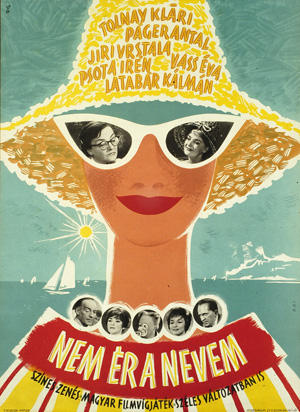 >> Sammlung ansehen Das Ungarische Filmarchiv macht ca. 1.200 Filmplakate über das EFG verfügbar, die einen Überblick über die ungarische Plakatkunst aus den Anfängen des ungarischen Kinos im Jahr 1900 auf den 1990er-Jahren geben.
>> Sammlung ansehen Das Ungarische Filmarchiv macht ca. 1.200 Filmplakate über das EFG verfügbar, die einen Überblick über die ungarische Plakatkunst aus den Anfängen des ungarischen Kinos im Jahr 1900 auf den 1990er-Jahren geben.
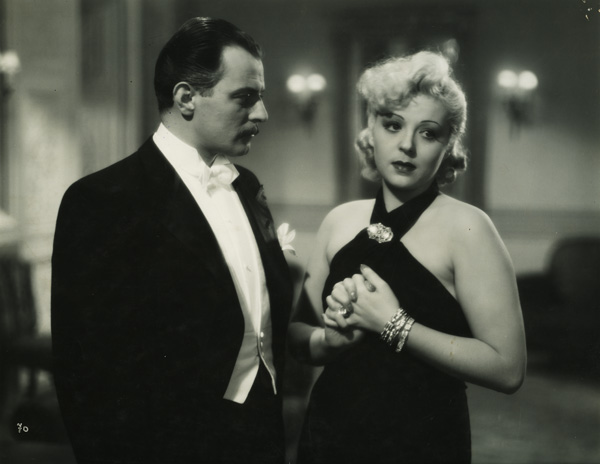 >> Sammlung ansehen Die Auswahl von rund 1.000 Filmstills umfasst den Zeitraum von den Anfängen des ungarischen Kinos bis 1947 und beinhaltet Fotos zu frühen Filme von berühmten Regisseuren wie Alexander Korda und Michael Curtiz (Mihály Kertész).
>> Sammlung ansehen Die Auswahl von rund 1.000 Filmstills umfasst den Zeitraum von den Anfängen des ungarischen Kinos bis 1947 und beinhaltet Fotos zu frühen Filme von berühmten Regisseuren wie Alexander Korda und Michael Curtiz (Mihály Kertész).
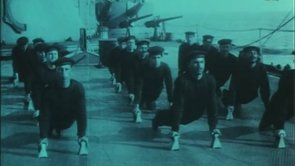 >> View collection The National Cinema Museum in Turin proposes online a series of fiction and documentary films preserved in its collection.
>> View collection The National Cinema Museum in Turin proposes online a series of fiction and documentary films preserved in its collection.
 >> Sammlung ansehen Das Nationale Tschechische Filmarchiv macht acht Spielfilme aus der Tschechischen Stummfilmzeit 1898 bis 1920 über EFG verfügbar. Ein Überblick über die Geschichte der tschechischen Dokumentarfilm bietet die Sammlung "Tschechische Dokumentarfilme". Bis zu 200 Filme von 1898 bis 1928 können auf EFG eingesehen werden.
>> Sammlung ansehen Das Nationale Tschechische Filmarchiv macht acht Spielfilme aus der Tschechischen Stummfilmzeit 1898 bis 1920 über EFG verfügbar. Ein Überblick über die Geschichte der tschechischen Dokumentarfilm bietet die Sammlung "Tschechische Dokumentarfilme". Bis zu 200 Filme von 1898 bis 1928 können auf EFG eingesehen werden.
>> View collection The NFA film collection contains newsreels, documentary and feature films, produced in the period 1914 – 1934. The most interesting part of the collection includes the images of Czechoslovak volunteers and legionnaires fighting in the Russian, French and Italian army. However, we can find here also shots mapping a situation behind the front (war’s supplying, testing of explosives, celebrations), depicting results of war (army hospitals with injured soldiers, return of soldiers after the end of the conflict) and images of activities revitalising collective memory on the World War One (unveiling of monuments to the memory of victims of the Word War One).
 >> Sammlung ansehen Über das EFG macht das Techische Nationale Filmarchiv Fotos zu tschechischen Speilfilmen bis 1920 zugänglich. Viele Filme dieser Zeit gelten als verloren und Fotos sind damit häufig die einzige Quelle, um Rückschlüsse auf die visuelle Form dieser Produktionen ziehen zu können. Die für EFG ausgewählten Fotos gehören einer umfassenderen Fotosammlung des Tschechischen Nationalen Filmarchivs an, die Aufnahmen von den Anfängen des Kinos bis zum Ende der verstaatlichten Filmproduktion 1991 umfasst.
>> Sammlung ansehen Über das EFG macht das Techische Nationale Filmarchiv Fotos zu tschechischen Speilfilmen bis 1920 zugänglich. Viele Filme dieser Zeit gelten als verloren und Fotos sind damit häufig die einzige Quelle, um Rückschlüsse auf die visuelle Form dieser Produktionen ziehen zu können. Die für EFG ausgewählten Fotos gehören einer umfassenderen Fotosammlung des Tschechischen Nationalen Filmarchivs an, die Aufnahmen von den Anfängen des Kinos bis zum Ende der verstaatlichten Filmproduktion 1991 umfasst.
 >> View collection The state-financed Cultural Souvenir Films were produced by The National Film Board of Norway (established in 1948), and were part of a public enlightenment programme of the new social democracy, where old Norwegian customs were central to rebuilding a national identity after WWII. The Cultural Souvenir films were made primarily for educational purposes, with the aim of distributing knowledge about traditional Norwegian crafts and ways of living – for example how to make national costumes, brown cheese, or skis.
>> View collection The state-financed Cultural Souvenir Films were produced by The National Film Board of Norway (established in 1948), and were part of a public enlightenment programme of the new social democracy, where old Norwegian customs were central to rebuilding a national identity after WWII. The Cultural Souvenir films were made primarily for educational purposes, with the aim of distributing knowledge about traditional Norwegian crafts and ways of living – for example how to make national costumes, brown cheese, or skis.
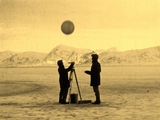 >> View collection On December 14, 1911, Roald Amundsen, accompanied by four men, won the race to reach the South People. One of the most important documents from this expedition is The South Pole Film, one of four documents from Norway included on the UNESCO international register for the Memory of the World. The South Pole Film is actually three films - three slightly different versions for the Norwegian, English and German markets that vary somewhat in length, and feature intertitles in the three different languages.
>> View collection On December 14, 1911, Roald Amundsen, accompanied by four men, won the race to reach the South People. One of the most important documents from this expedition is The South Pole Film, one of four documents from Norway included on the UNESCO international register for the Memory of the World. The South Pole Film is actually three films - three slightly different versions for the Norwegian, English and German markets that vary somewhat in length, and feature intertitles in the three different languages.
 >> Sammlung ansehen Über das EFG ermöglicht die Nationalbibliothek in Oslo den Zugriff auf eine Auswahl von rund 350 Filmen, von denen viele exemplarisch für das norwegische Kino von 1900 bis 1935 stehen. Zur über das EFG verfügbar gemachten Sammlung gehören auch historische Werbefilme aus den 1920er bis 1950er Jahre sowie Dokumentarfilme über Oslo.
>> Sammlung ansehen Über das EFG ermöglicht die Nationalbibliothek in Oslo den Zugriff auf eine Auswahl von rund 350 Filmen, von denen viele exemplarisch für das norwegische Kino von 1900 bis 1935 stehen. Zur über das EFG verfügbar gemachten Sammlung gehören auch historische Werbefilme aus den 1920er bis 1950er Jahre sowie Dokumentarfilme über Oslo.
 >> View collection This collection of more than 90 commercial films dates from a period of prosperity in Norway - a period when social differences diminished and most people could afford to purchase the products advertised for in this collection: clothes, vehicles of transportation, household appliances, and more. Today, these films constitute entertaining and charming documents of their time, aesthetically, and in the attitudes, language and gestures.
>> View collection This collection of more than 90 commercial films dates from a period of prosperity in Norway - a period when social differences diminished and most people could afford to purchase the products advertised for in this collection: clothes, vehicles of transportation, household appliances, and more. Today, these films constitute entertaining and charming documents of their time, aesthetically, and in the attitudes, language and gestures.
 >> View collection Oil was found in the Norwegian sector of the North Sea in 1969, the same year man first walked on the moon. The film and video material in the Ekofisk collection is characterized by the technological enthusiasm and optimism typical of the period. The Phillips Petroleum Company in Norway followed the American method of filming their work and projects, an essential part of their training and documentation. The Ekofisk films are unique documents from the pioneering period in the North Sea. The films were used for presentations, information, documentation, and promotion.
>> View collection Oil was found in the Norwegian sector of the North Sea in 1969, the same year man first walked on the moon. The film and video material in the Ekofisk collection is characterized by the technological enthusiasm and optimism typical of the period. The Phillips Petroleum Company in Norway followed the American method of filming their work and projects, an essential part of their training and documentation. The Ekofisk films are unique documents from the pioneering period in the North Sea. The films were used for presentations, information, documentation, and promotion.
 This collection presents a selection of the silent film material in the National Library of Norway. The collection includes Norway’s earliest extant fiction film: Under forvandlingens lov ( Under the law of transformation ) directed by Halfdan Nobel Roede in 1911. The collection also includes several travelogues, amateur films, orphan works, and more. There are several recordings of Olympic Champion Sonja Henie, before her fame in America and Hollywood – as a 12-year old girl practicing her skills –possibly the earliest moving images of Henie.
This collection presents a selection of the silent film material in the National Library of Norway. The collection includes Norway’s earliest extant fiction film: Under forvandlingens lov ( Under the law of transformation ) directed by Halfdan Nobel Roede in 1911. The collection also includes several travelogues, amateur films, orphan works, and more. There are several recordings of Olympic Champion Sonja Henie, before her fame in America and Hollywood – as a 12-year old girl practicing her skills –possibly the earliest moving images of Henie.
 In many of the neutral countries, daily life continued more or less unaffected by the war. The films from the Nasjonalbiblioteket (National Library of Norway) illustrate the quotidian life in Norway during the years 1914-1918, far removed from the trenches. However, information about the war reached Norway through international newsreels from companies such as Gaumont, Éclair and Pathé, often with Norwegian intertitles - these items composes a part of the Norwegian contribution to the EFG1914 project.
In many of the neutral countries, daily life continued more or less unaffected by the war. The films from the Nasjonalbiblioteket (National Library of Norway) illustrate the quotidian life in Norway during the years 1914-1918, far removed from the trenches. However, information about the war reached Norway through international newsreels from companies such as Gaumont, Éclair and Pathé, often with Norwegian intertitles - these items composes a part of the Norwegian contribution to the EFG1914 project.
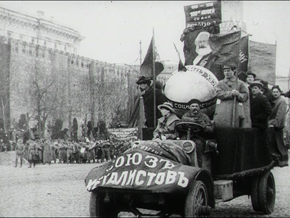 >> View collection The Kinonedelja (Kino-Week) newsreels constitute the first films of Dziga Vertov. A total of 43 issues, each containing an average of 5 to 7 different items, were produced between May 1918 and June 1919. Vertov joined the newsreel’s ranks as a secretary but by the fall of 1918 had taken on full responsibility for the series, defining the content and structure of each issue. In some cases, Vertov even functioned as director of the newsreels.
>> View collection The Kinonedelja (Kino-Week) newsreels constitute the first films of Dziga Vertov. A total of 43 issues, each containing an average of 5 to 7 different items, were produced between May 1918 and June 1919. Vertov joined the newsreel’s ranks as a secretary but by the fall of 1918 had taken on full responsibility for the series, defining the content and structure of each issue. In some cases, Vertov even functioned as director of the newsreels.
 Sammlung wird demnächst verfügbar gemacht: Im Sommer 2015 machte das Filmmuseum seinen kompletten Bestand der ersten staatlich produzierten österreichischen Wochenschauserie, Österreich in Bild und Ton, über eine recherchierbare Datenbank online zugänglich und in nun auch über EFG auffindbar. Die Lebensdauer der Serie (1933 bis 1938) entspricht der des austrofaschistischen Ständestaats.
Sammlung wird demnächst verfügbar gemacht: Im Sommer 2015 machte das Filmmuseum seinen kompletten Bestand der ersten staatlich produzierten österreichischen Wochenschauserie, Österreich in Bild und Ton, über eine recherchierbare Datenbank online zugänglich und in nun auch über EFG auffindbar. Die Lebensdauer der Serie (1933 bis 1938) entspricht der des austrofaschistischen Ständestaats.
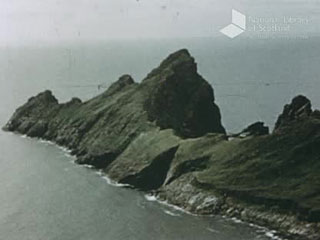 >> View collection The selection of films from the National Library of Scotland on European Film Gateway are mostly non-fiction, and include documentaries, newsreels, educational material, television, public information films, industrial, advertising and promotional material.
>> View collection The selection of films from the National Library of Scotland on European Film Gateway are mostly non-fiction, and include documentaries, newsreels, educational material, television, public information films, industrial, advertising and promotional material.
 Deutsch
Deutsch English
English Čeština
Čeština Dansk
Dansk Français
Français Italiano
Italiano Lietuvių
Lietuvių Magyar
Magyar Nederlands
Nederlands Norsk
Norsk Português
Português Suomi
Suomi
